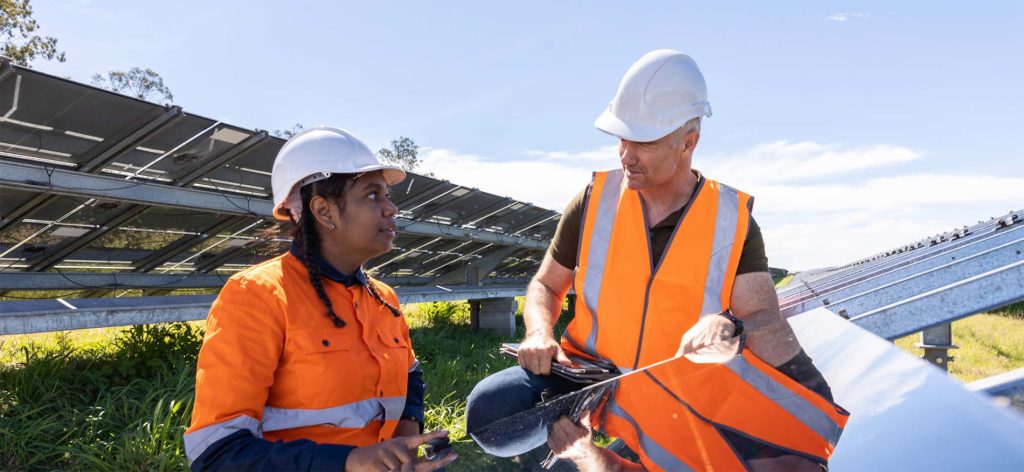New Sustainability Suggestions and 5 Recent Infrastructure and Utilities Developments
With consistent and ongoing changes prevalent in the infrastructure and utilities industries, it is crucial to remain aware and up-to-date with the latest news, trends, and developments in order to make well-informed decisions for you and your organisation. With a further push for highlighting the dangers of asbestos, discussions of the future, and areas of…
With consistent and ongoing changes prevalent in the infrastructure and utilities industries, it is crucial to remain aware and up-to-date with the latest news, trends, and developments in order to make well-informed decisions for you and your organisation.
With a further push for highlighting the dangers of asbestos, discussions of the future, and areas of improvement when it comes to sustainable practice, there has been a lot coming out of the news cycle over the past few weeks.
Keep reading for further insights on these developments.
Advocacy Australia shines a light on the dangers of asbestos – Inside Construction
The Asbestos Education Committee of Advocacy Australia is urging the construction industry to be aware of the dangers of asbestos, which continues to cause preventable deaths in Australia.
Despite the material being banned in commercial and non-residential properties since the 1980s, many buildings still contain asbestos-containing materials (ACMs) and professionals in the field need to manage and dispose of it safely.
Asbestos can be found in various locations, including walls, ceilings, roofs, vinyl floor coverings, and even in less obvious places like soils and electrical switchboards.
The AEC provides free resources to increase awareness of the dangers of asbestos.
Read more here.
Eraring power station workers say jobs are in doubt as calls grow for transition authority – Keely Johnson and Carly Cook, ABC News
Calls have intensified for the Australian government to establish a National Energy Transition Authority and allocate funding for it in next month’s budget, as the country’s oldest coal-fired power station, Eraring, is set to close down in 2025.
The Electrical Trades Union said that in the past decade, 11 coal-fired power stations have closed with an average notice period of four months, leaving workers and communities devastated.
The union and community members believe that the authority is essential to create new industries and jobs and help manage the energy transition, which is already underway in the Hunter Valley region.
The government has yet to determine how the authority will be set up and operated.
Read more here.
Australia missing out on benefits of recycled roads – Build Australia
Standards Australia’s new report, developed in partnership with the Australian Council of Recycling (ACOR), has identified barriers to the uptake of recycled content in roads in Australia.
The report calls for a partnership between industry and government to address the primary roadblocks and outlines a roadmap to advance the use of recycled materials in roads.
The report found varying specifications between jurisdictions and a lack of nationally harmonised performance-based standards to be significant barriers.
Recommendations include increasing collaboration between the Australian Government, Standards Australia, and industry to create new standards or modify existing ones, and creating guidance material to improve awareness and overcome misconceptions.
Read more here.
REPORT: Reusing, repurposing and recycling wind turbines – Tayla Oates, Energy Magazine
A new Clean Energy Council report has examined the end-of-life cycle of wind turbines, highlighting the need for sustainable waste management practices.
As of 2023, 31 wind farms totalling 599 turbines across Australia are over 15 years old, and the report estimates that an estimated 15,000t of blade composite waste will have been created in Australia by 2034 due to decommissioned wind farms.
However, between 85% and 94% of wind turbines (by mass) can avoid landfill disposal, with an array of applications for their components, such as recycling or repurposing raw materials.
The report underscores the potential for industry and governments to go further with sustainable waste management practices.
Read more here.
Developers reap rewards of Sydney’s property surge – Build Australia
Sydney’s luxury property market is driving an increase in national house prices, with a 1.4% gain in Sydney leading to the first month-on-month increase since April 2022.
North Sydney is seeing particularly strong activity, with the top quartile of the market leading the price growth.
House prices are expected to continue to grow due to a shortage of building approvals, returning overseas migration, and rental shortages.
Aqualand has seen strong sales of its luxury property developments, with over $150 million in sales across three projects since January 2023.
Read more here.
The future of construction – disrupted – Inside Construction
The Future of Construction Summit 2023, with the theme “FCON Disrupted,” aims to bring together government, industry, and union leaders to discuss and implement radical changes in the construction industry.
Jon Davies, CEO of the Australian Constructors Association, believes that the industry needs to fundamentally disrupt how it operates, particularly in terms of productivity, diversity, sustainability, and risk allocation.
The summit will also feature a Gen-Z panel discussion and technology exhibits.
Davies imagines a transformed industry that closes the productivity gap, achieves digital by default, has a diverse workforce, and reaches net-zero emissions. The government, industry, and unions all have a role to play in making this happen.
Read more here.
Want to learn more about the current market conditions and trends? Reach out to our infrastructure and utilities experts through the form on this page.







